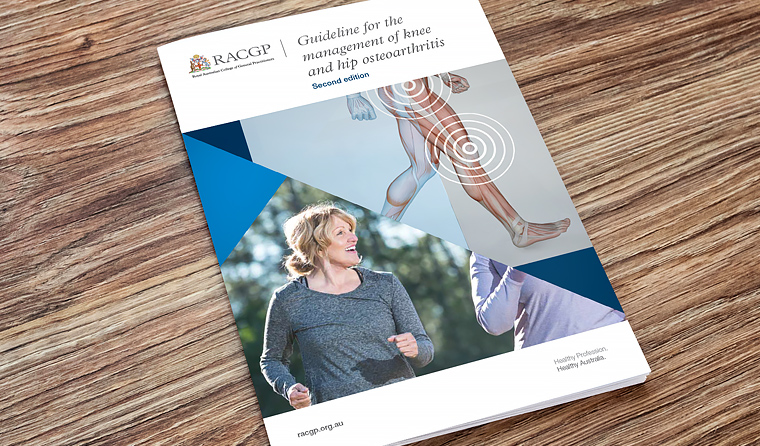News
Updated osteoarthritis guideline designed to reduce unnecessary imaging and surgery
The RACGP has updated its Guideline for the management of knee and hip osteoarthritis, aiming to reduce overreliance on measures such as surgery, imaging technology and medication.
 The updated guideline on osteoarthritis better reflects the latest evidence on the condition.
The updated guideline on osteoarthritis better reflects the latest evidence on the condition.
Osteoarthritis is a degenerative condition caused by wear and tear as people get older, and there isn’t much they can do except have surgery or take pain pills – right?
Actually, according to Professor David Hunter, a rheumatology clinician researcher at the University of Sydney School of Medicine and co-Chair of the Guideline development working group for the RACGP’s Guideline for the management of knee and hip osteoarthritis (the Guideline), this is absolutely not the case.
‘The general philosophy of, “This is just old age, it’s wear and tear, there’s nothing we can do about it”, oftentimes is inaccurate, but it also doesn’t help the patient to manage their disease,’ he told newsGP.
‘It really discourages people from proactively managing [osteoarthritis] when we know there’s a lot they can do to help make themselves better. So we’re trying to encourage people not to use that sort of language and to improve the proactive management of the disease.’
 Co-Chair of the Guideline development working group Professor David Hunter believes outdated attitudes that osteoarthritis is just ‘wear and tear’ discourage people from proactively managing the condition.
Co-Chair of the Guideline development working group Professor David Hunter believes outdated attitudes that osteoarthritis is just ‘wear and tear’ discourage people from proactively managing the condition.
The Guideline, updated for the first time in eight years and approved by the National Health and Medical Research Council (NHMRC), has been designed to reflect changing evidence in the field of treatment for osteoarthritis.
‘After comprehensive research and review, it’s important the medical profession is updated on how best to approach the growing concern of osteoarthritis,’ RACGP President-elect, Dr Harry Nespolon, said.
Professor Hunter agrees, and is eager to ensure that osteoarthritis treatment is brought into line with current research.
‘Osteoarthritis is incredibly common and we also know that it’s very poorly managed in many instances,’ he said. ‘We’re really trying to improve appropriateness of care by focusing on the existing evidence to support different interventions for this disease.’
To achieve this goal, the Guideline ranks preventive and lifestyle treatments for most cases over prior suggestions of medication, surgery or treatments such as acupuncture.
‘The Guideline has a large focus on how best to diagnose the disease and reduce the overuse and abuse of imaging,’ Professor Hunter said.
‘We emphasise lifestyle and behavioural interventions, such as exercise and weight loss, as the first line of management.
‘And we actively discourage treatments including glucosamine, opioids and arthroscopic surgery, which we know are widely used, cost the healthcare system a lot of money and don’t actually make people any better.
‘We’re trying to dissuade people from, I guess, what they see as quick fix or easy solutions that ultimately are potentially not beneficial in the long term,’ he said.
Professor Hunter believes that the majority of osteoarthritis treatment and management should be done in general practice, with interdisciplinary assistance from allied health professionals such as physiotherapists and dietitians to administer exercise and weight loss interventions.
He also feels it is essential to acknowledge that every patient’s needs are different and may be influenced by various factors, including comorbidities or socioeconomic status.
‘It is really important to do a holistic assessment of the patient and try to develop an individually tailored management plan,’ he said.
Additionally, lifestyle interventions can also improve other aspects of patients’ health.
‘The vast majority of people who have osteoarthritis have a number of other comorbidities that these interventions should be helping, as well,’ Professor Hunter said.
Dr Nespolon believes the updated Guideline can help improve health and wellbeing for a large number of patients.
‘The change in direction of management of this illness will provide the opportunity for people to live healthy and active lifestyles for years longer than before,’ he said.
Guideline for the management of knee and hip osteoarthritis osteoarthritis osteoarthritis guideline
newsGP weekly poll
Health practitioners found guilty of sexual misconduct will soon have the finding permanently recorded on their public register record. Do you support this change?